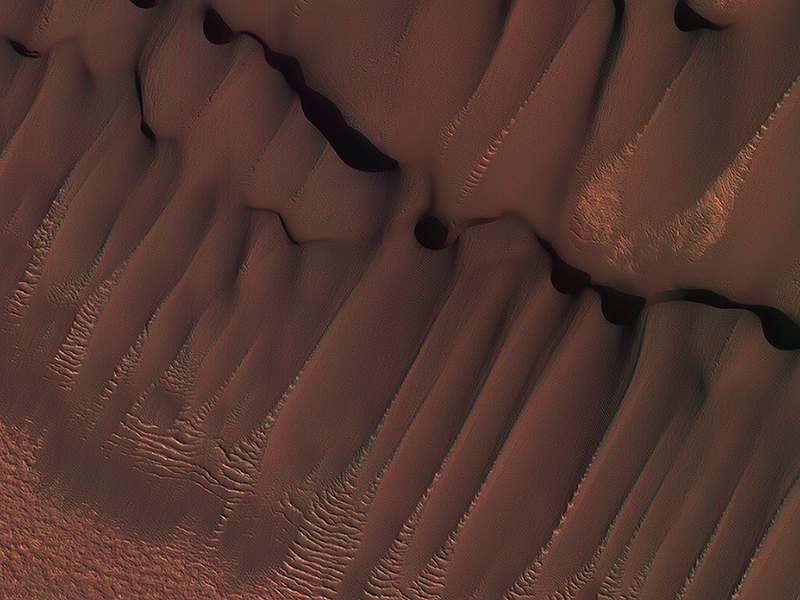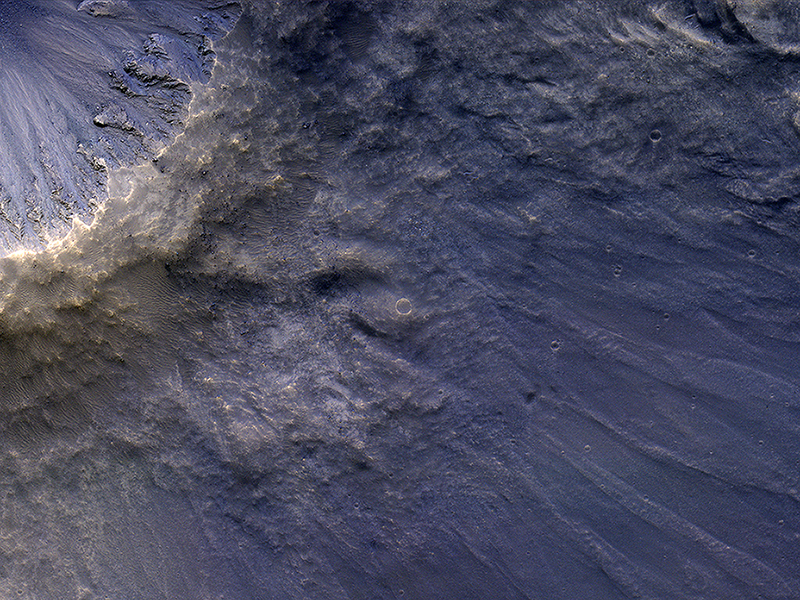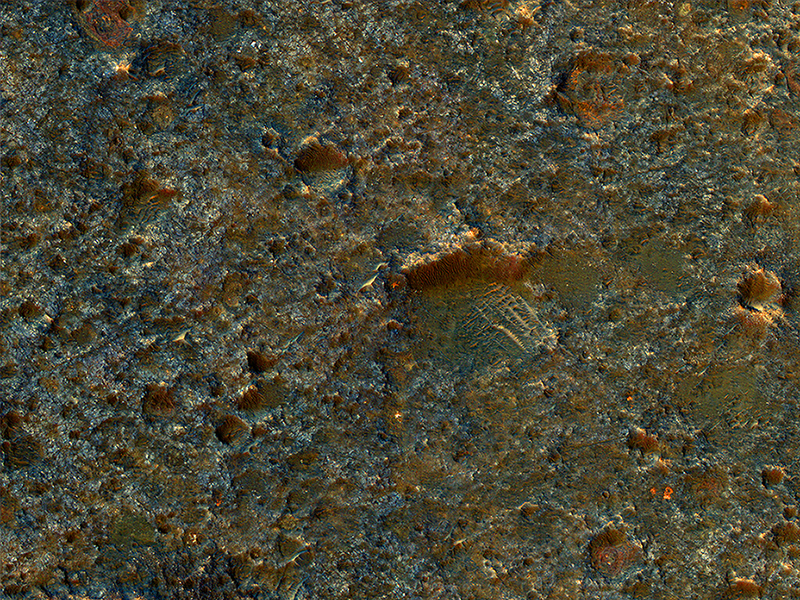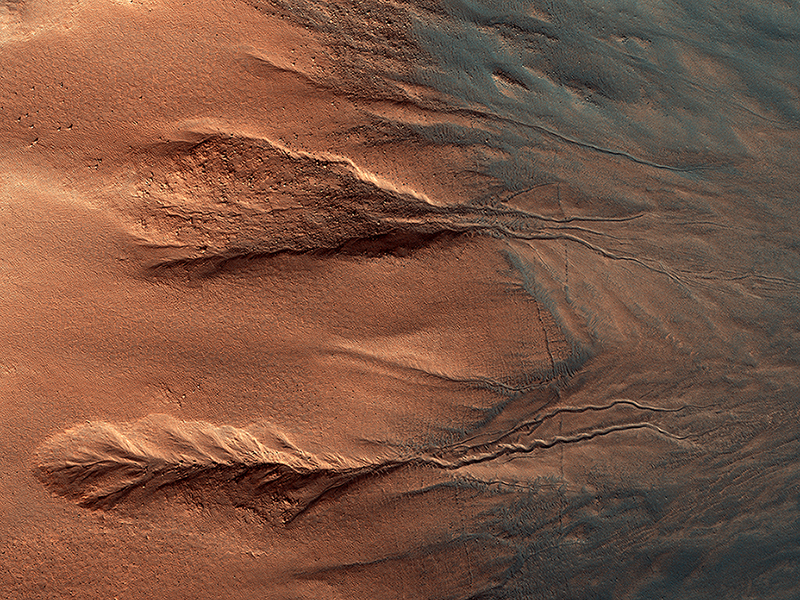Sarah Sutton wrote:Dunes in Northern Summer (PSP_009840_2745)
This dune field formed near the base of the North Polar cap. Dunes require a source of loose particulate material to form. The source of the northern dune fields around the polar cap may be from the layers of dusty ice that are eroded by strong polar winds.
This image was taken during the Martian northern summer, so there is no frost present on the dunes. The dunes closest to the base of the polar cap are long and parallel, indicating strong winds from the direction of the cap. As they get farther away from the polar cap, they start to form more crescent shaped dunes, called barchan dunes.
Repeated observations by HiRISE of dunes like these show measurable changes in some locations. This discovery adds to the growing evidence that there are active processes happening all over the surface of Mars today.
Veronica Bray wrote:Raining Rocks (PSP_005145_1690)
Impact ejecta is material that is thrown up and out of the surface of a planet as a result of the impact of an meteorite, asteroid or comet. The material that was originally beneath the surface of the planet then rains down onto the environs of the newly formed impact crater.
Some of this material is deposited close to the crater, folding over itself to form the crater rim, visible here as a yellowish ring. Other material is ejected faster and falls down further from the crater rim creating two types of ejecta: a “continuous ejecta blanket” and “discontinuous ejecta.” Both are shown in this image. The blocky area at the center of the image close to the yellowish crater rim is the “continuous” ejecta. The discontinuous ejecta is further from the crater rim, streaking away from the crater like spokes on a bicycle.
(Note: in the above image and the cutout, North is to the right.)
Alfred McEwen wrote:Hard Knocks in Tyrrhena Terra (ESP_021716_1685)
This enhanced-color image shows a small portion of a dark crater floor in the Tyrrhena Terra region of Mars. This is largely ancient hard bedrock that has been cratered by numerous impacts over the eons.
Two other interesting geological features in Tyrrhena Terra (not pictured here): Herschel Crater and Tyrrhena Patera, one of the oldest volcanoes on Mars.
Veronica Bray wrote:The Contrasting Colors of Crater Dunes and Gullies (ESP_020957_1290)
Gullies are relatively common features in the steep slopes of crater walls, possibly formed by dry debris flows, movement of carbon dioxide frost, or perhaps the melting of ground ice.
This example shows a section of crater wall from the rocky crater rim at the far left of the image, down to the dark dusty dunes on the crater floor in the bottom right. (North is to the left.) The rock of the crater walls shows up deep orange, and the sandy deposits on the crater floor and the base of the crater walls appear blue. The sand isn’t really blue; the different colors in this image represent different material compositions.
The gullies in this image have two main sections: a scalloped alcove at the top of the gully (left/center), and defined channel sections further down the crater wall (right/center). Material from the alcove will have traveled down the channel to the crater floor. This normally forms a third section to a typical gully, a debris fan. Fans commonly visible at the base of gullies are not obvious in this example however, as the wind blown sediments (blue) have covered the crater floor after gully formation.
Credit: NASA/JPL-Caltech/University of Arizona
<< Previous HiRISE Update



